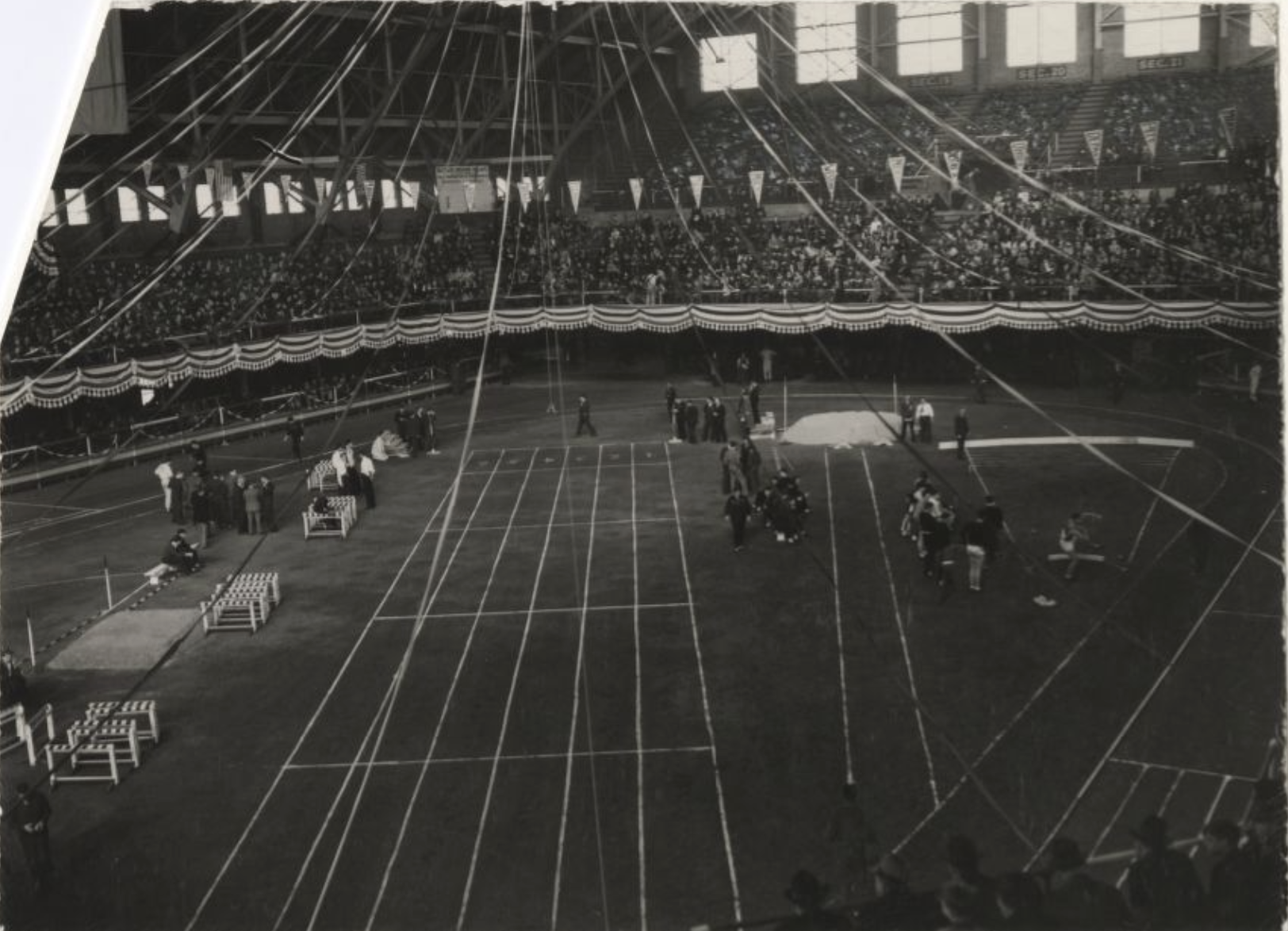Founded by track coach Herman Phillips, the Butler Relays were a prestigious American track and field competition. Phillips had won three NCAA quarter-mile championships and was a member of the 1928 U.S. Olympic 1,600 meter gold medal relay team.

The event annually showcased 350-400 athletes representing 20-30 colleges and universities. From an attendance of 3,500, the games grew to attract over 10,000 spectators to Butler Fieldhouse (later ) each March.
The college’s fraternities and sororities vied in yearly ticket sales, parade float, house decoration, and Relay Queen competitions. The University Division “Governor’s Cup” went to each year’s victor, with Indiana University (IU) claiming the inaugural trophy and the University of Notre Dame taking the final prize. The University of Michigan captured the eight intervening awards. Butler claimed the College Division “Mayor’s Trophy” between 1938 and 1941. In addition to the participation of legendary American Olympians Jesse Owens, Glenn Cunningham, Ralph Metcalfe, and IU’s Don Lash, the Butler Relays saw ten world records set or tied during the meet’s decade-long run.
When Phillips became the head track and field coach at Purdue University in 1938, Lawrence Holmes directed the relays for one year. Butler alumnus and former world two-mile record holder Ray Sears staged the games from 1939 until the fieldhouse was dedicated to military use in 1942. The Butler Relays were not reinstituted after World War II because of the expense and the basketball program’s influence over fieldhouse scheduling.

Help improve this entry
Contribute information, offer corrections, suggest images.
You can also recommend new entries related to this topic.